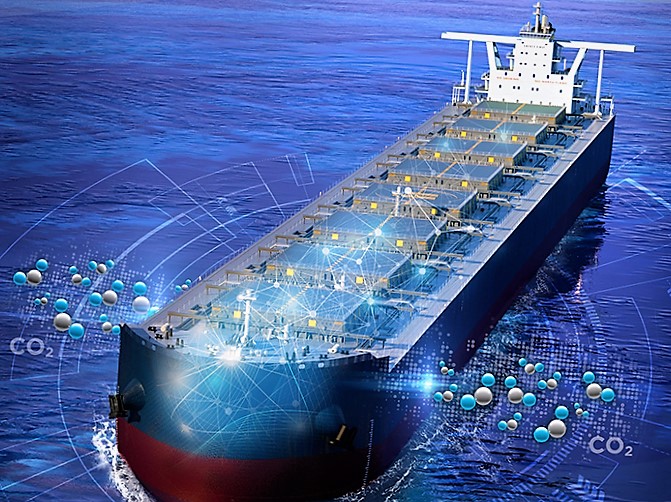Over the past few years, the North Sea supported efforts in Europe to capture carbon dioxide (CO2) from the atmosphere and store it underground. It has gathered momentum as governments and industry work to cut emissions in order to achieve their climate targets.
With the use of carbon capture and storage (CCS) technology, CO2 emissions are taken out of the atmosphere and buried. They may also apply a portion of the CO2 captured in other industrial processes.
According to the International Association of Oil and Gas Producers, there are about 70 CCS projects that are either now underway or are planned for Europe. Here are some that are being worked on.
Norway is the European country that uses the North Sea the most. There are several major projects there.
Northern Lights
Northern Lights is a joint venture project between Shell, TotalEnergies, and Equinor. Beginning in the middle of 2024, it intends to begin injecting up to 1.5 million tonnes of CO2 annually (mtpa) into the salty aquifer close to the Troll gas production. Depending on demand, there are plans to raise storage capacity to 5-6 mtpa starting in 2026.
Smeaheia
Smeaheia is an Equinor project to build a storage facility in the North Sea with the capacity to inject up to 20 mtpa starting in 2027–2028. In addition to some industrial customers in Europe, Equinor, which received the exploration license in 2022, stated that it is considering injecting the CO2 gathered from its own hydrogen production. The business plans to decide on the ultimate investment in 2025.
Luna
Luna, is a project run by German Wintershall Dea. It will use a site 120 kilometers west of Bergen to store up to 5 mtpa of CO2. In October, they granted an exploration license to Wintershall Dea and its Norwegian partner Cape Omega. Wintershall Dea owns 60% of the license, while Cape Omega of Norway holds the remaining 40%. Developing a storage site in the North Sea with a 4–8 mtpa capacity and an onshore receiving terminal is the goal of the Errai project, a partnership between Britain’s Neptune Energy and Norway’s Horisont Energi (HRGI.OL). The partners still need to submit a license application.
Britain has three major projects in the North Sea.
Acorn CCS
Acorn CCS, a project to build a storage site with a 5–10 mtpa CO2 yearly capacity off the coast of Scotland by 2030. Each of Storegga, Shell, and Harbour Energy owns 30% of the project, with North Sea Midstream Partners (NSMP) owning the remaining 10%.
Viking CCS
Viking CCS, formerly known as V Net Zero, is a project that is being directed by independent oil and gas company Harbour Energy (HBR.L), with a goal of storing up to 10 mtpa of CO2 in depleted gas sources in the southern North Sea by 2030. * Northern Endurance, a collaboration led by BP (BP.L), seeks to build infrastructure to transport and store around 20 mtpa of CO2 gathered, and intends to begin injecting CO2 in 2027, initially at a rate of 2 mtpa of CO2.
Northern Endurance
Northern Endurance, a partnership led by BP with the goal of creating infrastructure to move and store around 20 mtpa of CO2 gathered at two industrial clusters in Teesside and Humberside starting in 2030. The project intends to use pipelines to move CO2 to a storage location 145 kilometers offshore in the southern North Sea. Equinor, Shell, National Grid, and TotalEnergies are further project partners.
The Netherlands is the third country that operates on the North Sea.
Porthos
The port of Rotterdam, Gasunie, and EBN are working on a project called Porthos that intends to store 2.5 mtpa of CO2 in depleted Dutch gas sources in the North Sea. Four industrial partners—Air Liquide, Air Products, ExxonMobil, and Shell—have already signed contracts covering all storage capacity. The project intended to begin CO2 injections in 2024–2025, although it is likely that the start-up would be postponed due to legal challenges.
L10
L10, is a project run by Neptune Energy that aims to store 4-5 mtpa of CO2 in a Dutch North Sea-depleted gas well, with the first injections beginning in 2026. State-owned EBN, ExxonMobil, and Rosewood Exploration are additional project partners.
Denmark discovered the opportunities of the North Sea too.
Greensand
The project Greensand, run by INEOS Energy and Wintershall Dea, intends to begin injecting up to 1.5 mtpa of CO2 into depleted oil and gas fields in the Danish sector of the North Sea by 2025 and increase capacity to 8 mtpa by 2030.
Bifrost
TotalEnergies’ Bifrost project seeks to inject up to 3 mtpa of CO2 into an exhausted oil and gas field in the Danish portion of the North Sea beginning in 2027. The Technical University of Denmark and Orsted, a company that runs offshore pipelines, are also involved in the research. By 2030, locations beyond Bifrost might be investigated for up to 10 mtpa of injection.
Germany, for now, has only one CO2-capturing project.
Wilhelmshaven
In the Wilhelmshaven CO2 export terminal project, which is being spearheaded by Wintershall Dea, CO2 will be liquefied and temporarily stored at Wilhelmshaven, Germany’s only deep-water port, before being transported via ship or pipe to long-term storage facilities under the North Sea. Starting in 2026, it intends to initially process 1 mtpa of CO2.

